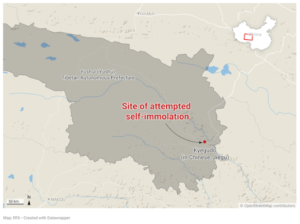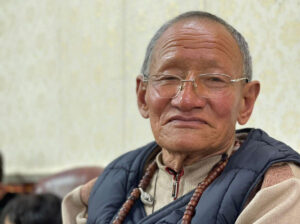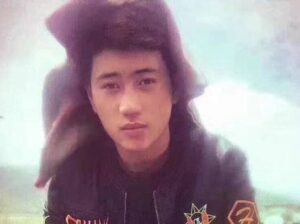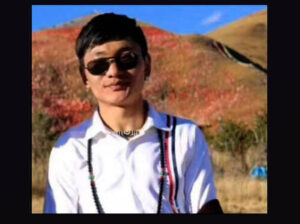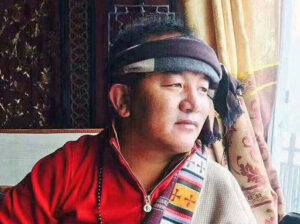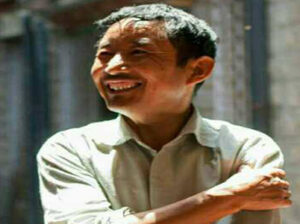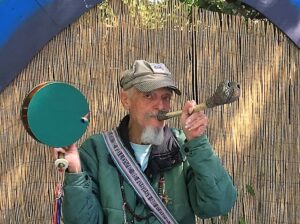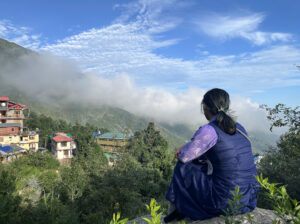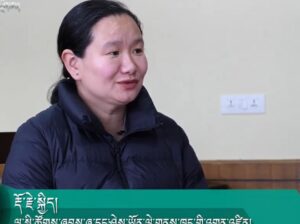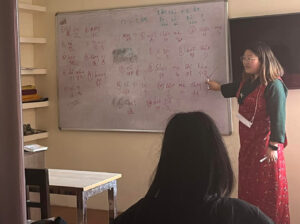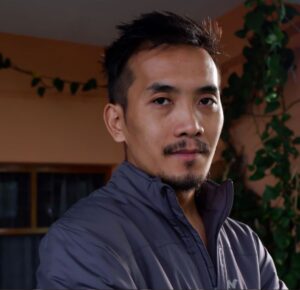 Jamphel Dorjee of Jamphel Animation is a freelance 3D animator who has been working with the Central Tibetan Administration’s Department of Education for the past eight years, creating a series of short animations for Tibetan children in the diaspora.
Jamphel Dorjee of Jamphel Animation is a freelance 3D animator who has been working with the Central Tibetan Administration’s Department of Education for the past eight years, creating a series of short animations for Tibetan children in the diaspora.
Contact: Can you introduce yourself for us?
Jamphel Dorjee: I came from Tibet at the age of eight in 1997 and joined the Tibetan Children’s Village school in Patlikul. After finishing school, I continued my further studies in Bachelor of 3D Animation and Visual Effect in Chennai. Between 2013 and 2015, I worked with three animation studios gaining hands-on experience in the field of character animation. In 2015, I came to Dharamshala and got this idea of starting an animation series for Tibetan children; I approached the department concerned at the Central Tibetan Administration (CTA) and since then I’ve been working on this project for better or worse.
Contact: How many series you have worked on and what are the names of those?
Jamphel Dorjee: I have been working on creating animation shorts based on a Tibetan comic book called A forgetful Uncle Pig, a story by Gen Kalsang Khedup with art by Gen Sonam Dhondup. It is a well-known and popular Tibetan comic book for children and I myself read it many times when I was in school. It is the story of a pig who has a problem of forgetting things, and each episode tells us about incidents of his forgetfulness. So far I have completed six episodes from this book, they are available to watch for free on Sherig videos, which is the Education Departments Youtube channel, and other social media platforms; they are also available to watch on Jamphel Animation’s Youtube channel.
Contact: How many people work with you and how long does it take to complete one episode?
Jamphel Dorjee: In general, animation shorts and series are the work of a team involving many people working on different aspects. There is no shortcut. 3D animation is a computer generated image, also called CGI, and people need to create the whole environment of the story and characters from scratch before animating them. Then animating them involves whole different levels of work in progress. In our community, I think I am the only person with this professional background as I was not able to find any team-mates to work with, so I have been working solo on this project, wearing the different hats as needed. The challenge of working solo on this seemingly simple, but big, project is that it takes so much time to complete one five-minute episode. It takes me almost a year to successfully complete one. My aim has always been to finish these series sooner so there is not too much of a gap between the release of one episode and the next. But, as I said, there is no shortcut. I either need to have a huge budget to hire other freelancers or do the work myself at my own pace.
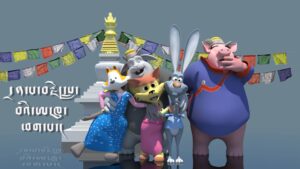 Contact: How is freelance life? Do you enjoy it? Or would you rather work in a team?
Contact: How is freelance life? Do you enjoy it? Or would you rather work in a team?
Jamphel Dorjee: From my experience, freelance life, especially in my kind of setting where one needs to sit at a desk and work for long durations, is a boring and lonely life. There is no growth that comes with sharing and exchanging ideas with other people. As for me, I feel that I am always trying to finish the project on time and there is no time to evolve or try to work on the quality. I would definitely like to work in a team. Working with different people would give us more scope for growth and, as for the quality, when there is a team, you get to work on the parts you are good at and not be a jack of all trades. When you work your best, there is satisfaction when the work is done. My specialisation in the field of animation is character animation but I don’t think I have had the opportunity to fully focus on this area so far.
Contact: What is the most challenging part of your journey so far?
Jamphel Dorjee: Since I work alone, I don’t have any guidance and I am not really satisfied with the quality of my work as I lack expertise and experience in the field of story telling through visual communication. I still need to study and learn so much in this field. The more I work, the more I realise how much I lack.
Contact: What is your advice for young people aspiring to take on this profession?
Jamphel Dorjee: Just study and study! Don’t rush to work. Technical skills can be learned through courses and these can give you a job. But if you really want to make a great film or shorts, or tell any story to the best of your ability, then you need to do further studies and to acquire the deep knowledge of the art of storytelling through animation. There is so much to study. Another important aspect of this profession is that one needs to be persistent and patient! Making even a short clip of animation work can take months. Without passion, patience and hard work, the process can be daunting for many.
Contact: Any dream stories that you wish to work on in the future?
Jamphel Dorjee: Yes. There are many stories related to Tibet’s unique culture and tradition and one day, I hope to make a short feature or films on them, and to present them on international platforms for world audiences. Films are a great way to connect and tell our stories, whether its animation or live shoots.




 Print
Print Email
Email